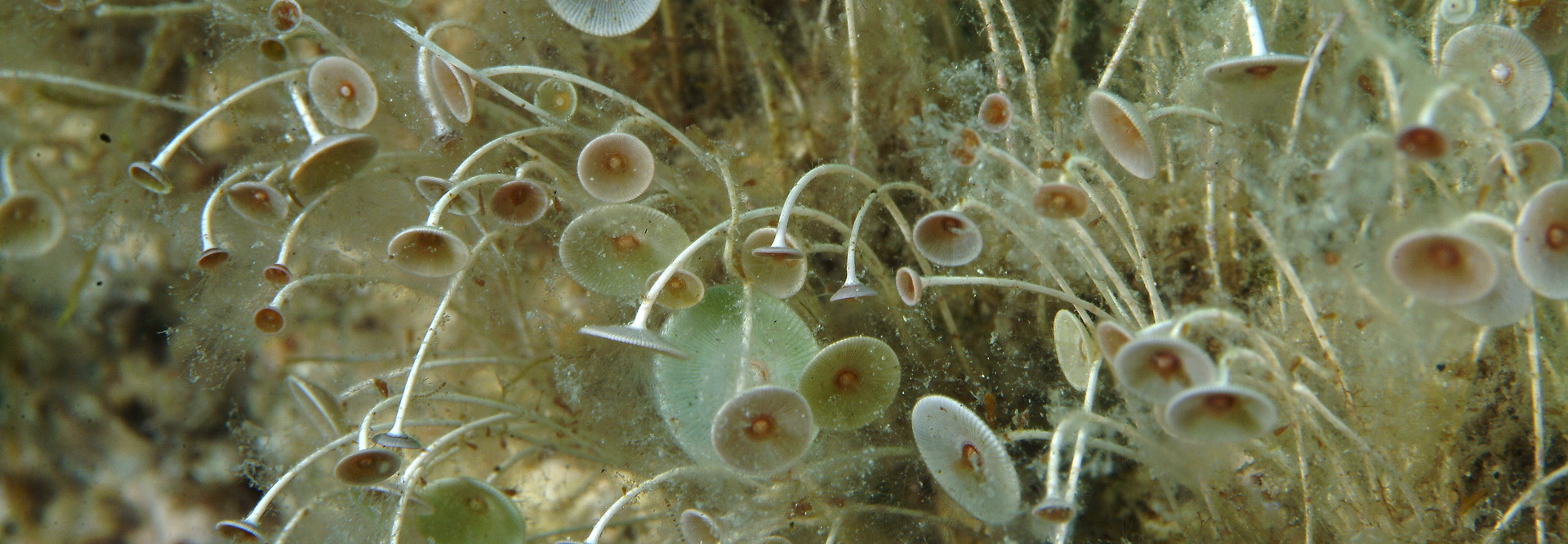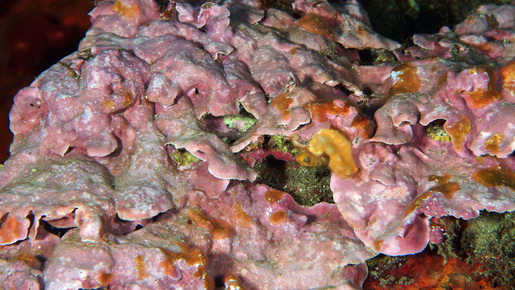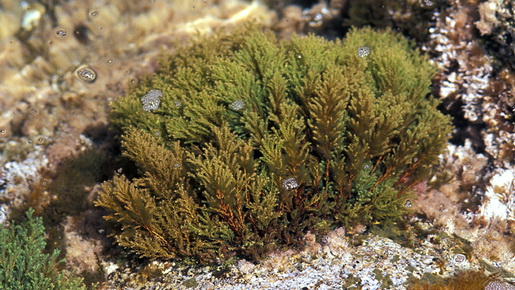Marines
Acetabularia acetabulum the acetabularia or beach umbrella is a green seaweed (Chlorophyta) that lives on the coastal rocky seabed, in areas sheltered from wave motion and at shallow depths. It has a typical whitish umbrella shape that makes it easily recognizable. Seasonal species, it is well visible especially in the summer months.
Lithophyllum byssoides the sea rose lives in the lower horizon of the mesolitoral and prefers environments exposed to wave motion and poorly lit. The hemispherical cushions can weld together to form frames and overhanging cornices a few decimeters wide and extended for meters, which can emerge completely during low tide. The fossil formations underneath the living forms can be over 50 cm thick. It is a perennial species with annual reproductive frequency. In the island of Tavolara it forms large and long "trottoir" that surround the island for several kilometers.
Cystoseira amentacea cystoseira frequent in rocky substrata in the upper intertidal and infralittoral belt between 0.2 and 1 metre deep. This species has adapted to the strong daily temperature variations, and needs places with high availability of sunlight. Environments exposed to frequent and intense wave motion are ideal for the growth of dense populations of this algae structuring the biocenosis of the infralittoral fringe. It is a perennial species with a ten-year life span.
Cystoseira zosteroides frequent on rocky substrates, it is a species very sensitive to temperature variations and has an optimum temperature between 14 and 15°C, which is why it proliferates at depths greater than those reached by the summer thermocline. It also needs exposed areas with unidirectional constant currents. Cystoseira zosteroides is a multi-year species and has two yearly reproductive cycles, in summer and autumn.




